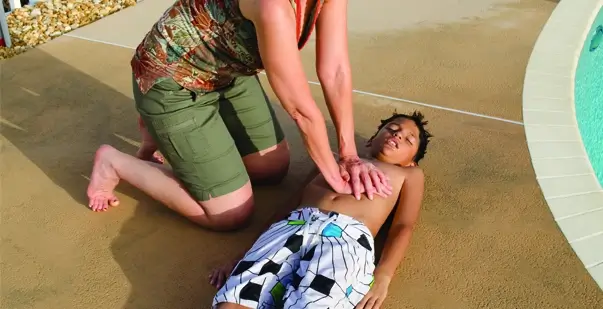
Last Updated On: September 9, 2024
CPR is a lifesaving skill that can help someone who is not breathing or whose heart has stopped beating. Children can also experience cardiac arrest, so it’s important to know CPR for children. In this article, we will cover some tips and techniques for performing CPR on children.
Taking CPR courses from the American CPR Care Association is a great way to learn how to perform CPR on children and adults.
These courses are designed to teach you the proper techniques and procedures for performing CPR, including how to give rescue breaths and perform chest compressions at the appropriate depth and rate.
So, if you’re interested in learning CPR and other life-saving skills, enroll yourself in a course with the American CPR Care Association. You never know when these skills might come in handy and help you save a life.
Performing CPR on a child can be different from performing it on an adult.
The first step is to check if the child is responsive. If the child is not responsive, you must immediately call 911 for emergency medical help. The next step should be to check for breathing, and if the child is not breathing or has no pulse, you should start performing cardiopulmonary resuscitation (CPR).
The first thing you need to do is place the child on a flat surface. Then, you need to tilt the head back slightly to open the airway.
After this, you need to give two rescue breaths. To do this, cover the child’s mouth and nose with your mouth and blow air into the child’s lungs. Watch for the chest to rise and fall as you do this.
After giving two rescue breaths, you need to start performing chest compressions till the child starts breathing. The proper depth and rate of chest compressions for children are different from those for adults.
For children between the ages of 1 and 8, you should compress the chest about 1.5 inches deep at a rate of 100 to 120 compressions per minute. For infants under the age of 1, you should compress the chest about 1 inch deep at a rate of 100 to 120 compressions per minute. Watch for the chest to rise.
To perform chest compressions, you need to place the heel of one hand on the center of the child’s chest, between the nipples.
After this, place your other hand on top of your first hand. Maintain straight arms and ensure that your hands are directly under your shoulders. Press down on the chest, using your body weight to help you. Make sure to lift your hands off the chest between compressions.
It’s important to call for emergency medical help as soon as possible when performing CPR on a child. In the absence of anyone else, administer CPR for two minutes before requesting assistance. If someone else is with you, have them call for help while you start performing CPR.
When calling for emergency medical help, provide clear and concise information about the situation. Tell the operator you are performing CPR for children and provide the child’s age, if possible.
Remember to stay calm and composed to respond to a situation effectively. Although it is stressful and scary, taking a deep breath and focusing on the necessary steps can help keep you calm.
It’s important to remember that time is of the essence in an emergency situation. The sooner you can get medical help, the better the child’s chances of survival. Don’t hesitate to call for help, even if you’re not sure if it’s necessary.
To become certified in CPR, you can take a course with ACCA. The course teaches you how to perform CPR on adults, children, and infants. It also teaches you how to use an AED, which is a device used to shock the heart back into rhythm.
In addition to CPR, ACCA also offers courses in first aid, bloodborne pathogens, and AED use. These courses are designed to give you the skills and knowledge you need to respond to emergencies and potentially save lives.
By taking these courses, you can become certified in CPR and other life-saving skills, which can be helpful in a variety of settings. Whether you’re a parent, teacher, or healthcare professional, knowing how to perform CPR can make a big difference in an emergency situation.
On completion, you will receive a certification card that is valid for a period of two years. It’s important to recertify every two years to make sure you’re up-to-date on the latest techniques and procedures.
Performing CPR on a child can be scary. However, knowing how to perform CPR can help save a child’s life. Remember to check for responsiveness, give rescue breaths, and perform chest compressions at the proper depth and rate. Call for emergency medical help as soon as possible and get certified in CPR to be prepared for any emergency situation.
Register for a CPR course today. Learn how to start CPR on children without panicking. Be the first one to recognize a CPR emergency in children near you with complete and updated knowledge. You have it all in you to be the hero in a child’s life when moments are scary and yet matter the most.